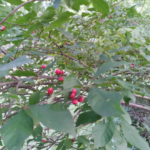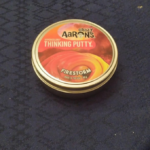Nixtamalization (or, Learning from your elders)
I think about food a lot. This may not be surprising, since food is reputed to be one of the two major preoccupations of males. But I have an extra advantage in the time spent thinking about food, because I’m trying to hone my gardening skills.
Recently, I’ve learned some interesting stuff about how many of the world’s staple foods originated here in North America. When the Europeans colonized America, didn’t they bring all their food traditions with them? Well, it turns out a lot of food products actually travelled the other way. Tomatoes – longtime mainstay of Italian food? Actually, native to Central and South America, domesticated by the Aztecs, introduced to Europe by the conquistadores. Potatoes – foundation of Irish, English, and German cuisine? Actually, native to the Americas, domesticated by many different tribes of native Americans, introduced to Europe by the conquistadores. And then of course there’s corn – now grown worldwide, but native to the Americas, carried to Europe by Christopher Columbus himself.
It’s the story of corn that really caught my attention, because my family has been striving to grow it in our backyard. The story of corn is a remarkable mix of history, hunger, and perhaps hubris. The Mesoamerican and American Indians, of course, had grown maize for centuries. However, these Indians had developed a distinct process of preparing it: they soaked the dried corn kernels in lime water, wood ash, crushed sea shells, or some other readily available alkaline solution before grinding it. This process – nixtamalization – both allowed the hulls to be softened and easily removed, and also chemically changed the corn, allowing it to be worked into dough (which regular cornmeal cannot).
Well, when the Europeans adopted corn, they brought the plant but not the method of preparation. Sixteenth century Europeans already had mechanized mills and were able to hull the corn without the use of nixtamalization, so it seems they dismissed the process as unnecessary. However, this soon led to significant problems. In areas of Europe (and later, Africa and Asia) where corn became widespread, malnutrition resulted – particularly a disease called pellagra, caused by a vitamin B deficiency. It turns out that nixtamalization, besides its other advantages, removes fungal toxins and unbinds vitamins and proteins for use by the human body. In places where corn is a staple crop, the process is essential for complete nutrition. Today, the process is still in use, and is the basis for tortillas, tamales, hominy, and many other traditional foods.
This is amazing to me. How is it that native cultures across the Americas (from the Incas to the North American tribes) had each developed unique processes of nixtamalization – via the resources they had on hand – all performing the same chemical function? How is it that they discovered that this was vital to good nutrition? How is it that this process was not adopted by the more “advanced” European cultures?
Without reading too much into this, one conclusion I’d like to draw: never get too sophisticated to respect the wisdom of our elders. Sometimes our milling methods or tech savvy or scientific advancements are no substitute for the wisdom of the ages. On a more personal note, I should master the nixtamalization process before planting my entire backyard with corn. And perhaps find a good wholesale source of pickling lime.
More from Tim Carr
- Virginia’s Native Allspice

- Wet and Wicked Weather in Western Virginia – Part 3

- Virginia’s Earth-shaking Events

- Roanoke – the Star City Game

- Saving the Planet, one Semi-Immortal Toyota at a time

- Chic(k) Lifestyle – Part 1
- Books to Read Aloud – Caddie Woodlawn

- 5 Random Items We No Longer Want To Do Without





